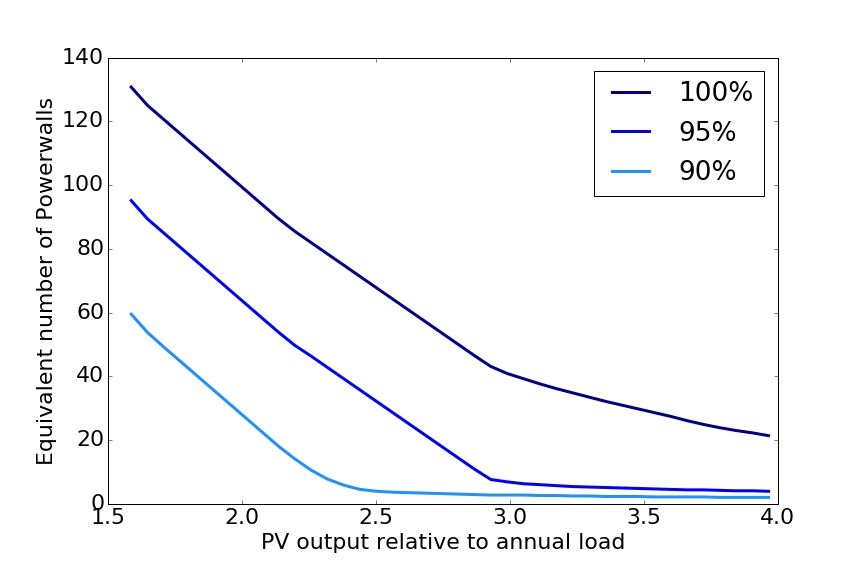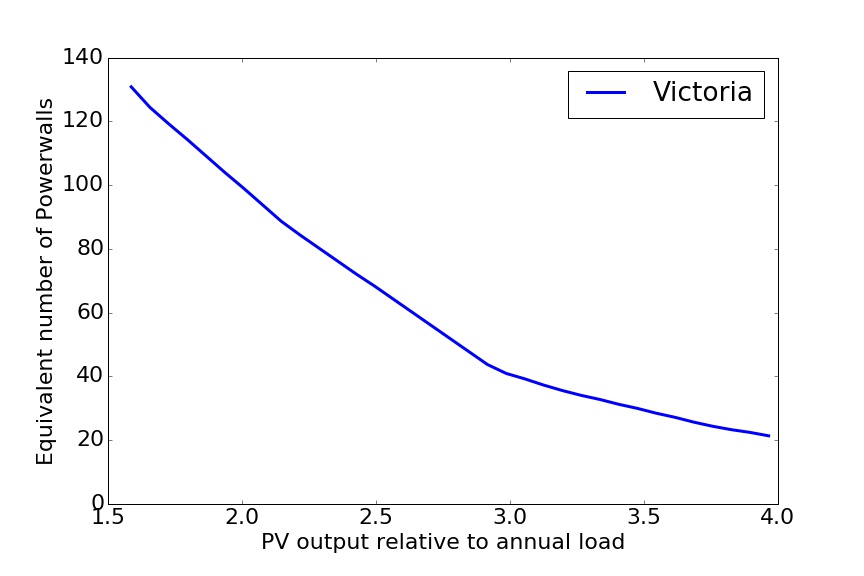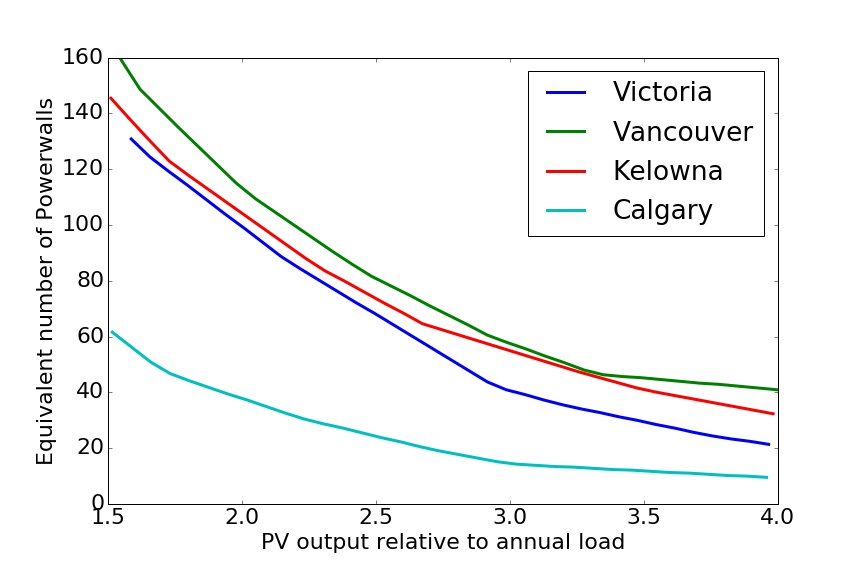In the past, the pace of change for energy technologies has been much slower than more familiar devices; such as consumer electronics. However, as we witness the impacts of learning and scale on solar photovoltaics (PV), wind farms, battery storage, electric vehicles (EV), and heat pumps, it appears this situation may be changing. Rapid improvements in performance and rapidly decreasing costs are enabling increasing rates of adoption of these technologies. In the long term, the potential role of these technologies in solving the global carbon problem is clearly immense. In the shorter term, however, this trend is forcing electrical system operators to prepare for a future where supply and demand are more dynamic and uncertain. The impacts of this paradigm shift are already evident in some jurisdictions where there is broad adoption of PV in the residential sector.
To shed some light on the opportunities and challenges associated with new, distributed energy technologies, the 2060 Project team is presenting a four-piece blog series highlighting important aspects of the residential energy sector paradigm shift. This first blog provides some thoughts around the popular notion of energy self-sufficiency. In subsequent posts, we will delve into the nuances of residential photovoltaic systems, electrification of space heating/cooling, and residential energy storage.
First, let’s consider a grid-connected three-bedroom house in Victoria, B.C. If a 5 kW PV system, a relatively common size for residential PV system, is installed on the roof, it would generate 6365 kWh, equivalent to 66% of the annual household load (9628 kWh). 44% of this energy is used directly to meet household demand, but, because the energy generated by the PV system at times exceeds household demand, 56% of this energy is sent back to the grid. Grid-connection ensures that this excess energy does not go to waste.
Now let’s consider the self-sufficiency case. For this blog, we define energy self-sufficiency as the situation in which a household never draws power from the grid, but can send power to the grid at any time. It is important to note that this definition does not mean that “the cord” to the grid has been cut; as is sometimes implied by the phrase.[1] Again, we have modeled the three-bedroom house in Victoria but, this time, the house is equipped with a range of PV capacities (kW) and a range of battery capacities (kWh)[2]. The energy demand for this house is assumed, as above, to be equal to 2016 hourly load data collected from a three-bedroom house, also located in Victoria. This house has annual demand of 9628 kWh, non-electric heating and does not charge an electric vehicle.
The required PV and storage capacities required to achieve self-sufficiency are shown in Figure 1. The horizontal axis shows the PV system capacity in units of PV output, relative to annual load. A value of 2.0 on this axis indicates that, over the course of a year, the solar panels produce twice as much electricity as the house consumes (~ 19,200 kWh). The vertical axis shows the storage capacity in units of Equivalent number of Tesla Powerwalls. One Powerwall has a capacity of 13.5 kWh.
As shown in Figure 1, if a homeowner who wishes to be energy self-sufficient purchases a 12 kW PV system, enough capacity to produce roughly one and a half times its annual energy demand, this homeowner must also buy 131 Tesla Powerwalls. Alternatively, this homeowner can opt for a 30 kW PV system and 21 Powerwalls. Note, that this 30 kW PV system requires an area of roughly 300 m2 (3,200 ft2) – this is considerably larger than the 84 m2 roof of the house from which the load data was actually gathered. This analysis assumes that the storage can be charged and discharged with no losses (100% efficiency). Real batteries typically have efficiencies closer to 90% which means that the number of Powerwalls that would actually be needed would be higher than shown here
How does Victoria compare to other Western Canadian cities? The self-sufficiency curves for Vancouver, Kelowna, and Calgary are shown in Figure 2. In all cases, the sizing requirements are driven by the winter season in which the days are short, the sun is low in the sky and cloud cover is more prevalent. Unsurprisingly, Calgary requires less PV and storage capacities due to their clear and sunny winters.
Remember that these plots do not account for electrification of space and water heating, nor is there an electric vehicle, which is likely essential for the decarbonization of our economy. Electrification of heating demands makes energy self-sufficiency even more challenging because: (1) electrifying heating demand significantly increases total electricity demand (e.g. by a factor of 2 for the house that we modeled in Victoria) and (2) much of this new demand occurs in the winter when solar generation is at a minimum level.
What happens if we loosen the self-sufficiency requirement? If we allow the grid to serve 5% or 10% of the annual demand (i.e. 95% or 90% self-sufficiency), then the capacity requirements become less prohibitive, as shown in Figure 3 for the house in Victoria.

Figure 3: Self-sufficiency curves for Victoria, BC, in the cases of 100%, 95%, and 90% energy self-sufficiency.
While the goal of energy self-sufficiency using PV and batteries is clearly challenging for the average Canadian home, there are opportunities to generate a substantial amount of energy with reasonably sized PV panels. Additionally, in regions where electricity is primarily generated by fossil fuels, residential PV will add valuable low carbon energy to the system. However, if the continuous, reliable and economic electricity service demanded by the homeowner is to remain unchanged, the connection to the larger electrical grid is an essential requirement. In light of this, the concept of personal self-sufficiency needs careful consideration. The necessary support of the broader grid, or ‘cord’, suggests collective-sufficiency is a more feasible path towards decarbonization.
In future blog posts, we will delve into the potential impacts and electrical system requirements associated with residential solar photovoltaics (PV), widespread deployment of electric vehicles (EV), and electrification of residential heating on electricity demand in Western Canada.
Click link or image for infographic.
[1] “In Ontario, hydro’s future gets murkier as costs of leaving the grid decline,” Globe and Mail, Nov 13, 2017.
[2] We assume that the PV panels are inclined at 48 degrees and are non-tracking and that the batteries are 100% efficient.

